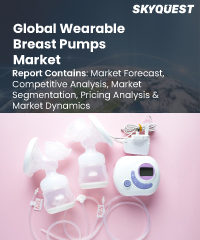
Product ID: SQMIG35A2356

Report ID:
SQMIG35A2356 |
Region:
Global |
Published Date: February, 2024
Pages:
157
|
Tables:
61 |
Figures:
75
Wearable Breast Pumps Market Drivers
Increasing Growing Demand for On-the-Go Solutions
Supportive Government Initiatives and Workplace Policies
Wearable Breast Pumps Market Restraints
Stringent Maintenance and Cleaning
Potential Discomfort and Fit Issues
Our industry expert will work with you to provide you with customized data in a short amount of time.
REQUEST FREE CUSTOMIZATIONWant to customize this report? This report can be personalized according to your needs. Our analysts and industry experts will work directly with you to understand your requirements and provide you with customized data in a short amount of time. We offer $1000 worth of FREE customization at the time of purchase.

Product ID: SQMIG35A2356